Address
304 North Cardinal
St. Dorchester Center, MA 02124
Work Hours
Monday to Friday: 7AM - 7PM
Weekend: 10AM - 5PM
Address
304 North Cardinal
St. Dorchester Center, MA 02124
Work Hours
Monday to Friday: 7AM - 7PM
Weekend: 10AM - 5PM

In the ever-evolving landscape of the kitchen appliances sector, a significant shift is taking place. As the demand for locally produced goods grows, the era of import substitution is gaining momentum. This trend is reshaping the way suppliers operate, prompting innovation and strategic adaptations. In this era, understanding the latest market trends, identifying opportunities, and overcoming challenges are paramount for suppliers looking to thrive. Let’s delve into the strategies and insights that are shaping the future of kitchen appliances in the import substitution era.
The kitchen appliances industry has undergone a significant shift, witnessing the rise of import substitution programs as a strategic move for many European and North American markets. This trend is not just a response to economic pressures but also a testament to the industry’s adaptability and innovation.
As consumers become more environmentally conscious and concerned about the carbon footprint of their purchases, local manufacturers are stepping up to offer alternatives to imported appliances. These domestic products often come with a reduced environmental impact, contributing to a more sustainable market landscape.
The demand for locally produced kitchen appliances has been further fueled by quality concerns associated with some imported goods. Consumers are increasingly seeking products that meet stringent safety and quality standards, leading to a preference for brands they can trust within their own region.
The rise of import substitution in the kitchen appliances sector is also driven by technological advancements. Local suppliers are leveraging cutting-edge technologies to create appliances that not only match but often exceed the performance of their imported counterparts. This has allowed them to compete on both price and quality, making it harder for foreign brands to dominate the market.
Government policies are playing a crucial role in this transformation. Many European and North American countries are implementing import substitution programs to reduce reliance on foreign suppliers and to stimulate their domestic economies. These programs often provide incentives such as tax breaks, subsidies, and grants to domestic manufacturers, making it more financially viable for them to produce locally.
The success of import substitution is not just about economic benefits; it’s also about fostering a sense of national pride and self-sufficiency. By investing in domestic production, countries can showcase their technological capabilities and strengthen their industrial base.
One of the key advantages of import substitution is the shorter supply chain, which translates to quicker response times to customer needs and issues. Local suppliers can tailor their products to the specific preferences and requirements of the regional market, ensuring a better fit for consumers.
The growth of e-commerce has also played a role in the rise of import substitution. With more consumers shopping online, local suppliers can easily reach a wider audience without the need for extensive distribution networks that international brands might rely on.
Despite the positive developments, the import substitution movement is not without its challenges. Local manufacturers often face the hurdle of high initial investment costs for setting up new production facilities and research and development. Moreover, they may struggle to gain the same level of brand recognition as established international brands.
To overcome these challenges, local suppliers are focusing on innovation and product differentiation. They are investing in design, functionality, and user experience to make their products stand out. Additionally, they are seeking partnerships with design firms and technology providers to bring cutting-edge features to their appliances.
The rise of import substitution in the kitchen appliances industry is a multifaceted phenomenon, encompassing economic, environmental, and technological factors. As consumers, governments, and businesses continue to recognize the value of local production, we can expect to see this trend gaining further momentum. The future of kitchen appliances lies in a balance between local ingenuity and global connectivity, where domestic suppliers play a pivotal role in shaping the market landscape.

The European and North American kitchen appliances markets are distinct in their consumer preferences, technological advancements, and regulatory landscapes. Here’s an in-depth look at the market dynamics shaping these regions.
Consumer Preferences:In Europe, consumers often prioritize energy efficiency and eco-friendliness when choosing kitchen appliances. The European Union’s strict energy labeling regulations have led to a demand for A++ and A+++ rated products. Additionally, there’s a growing trend towards smart kitchen technology, with a focus on convenience and connectivity. North American consumers, on the other hand, tend to place a higher value on style and functionality. The preference for stainless steel appliances is prevalent, and there’s a noticeable interest in large, high-performance units, such as commercial-grade ranges and refrigerators.
Technological Advancements:Europe has been at the forefront of integrating smart technology into kitchen appliances. From hands-free faucets and built-in ovens with WiFi connectivity to fridges that can manage grocery lists, European manufacturers are pushing the boundaries of innovation. In North America, while smart technology is gaining traction, the market is still catching up with European advancements. However, there’s a strong emphasis on energy-saving innovations, such as induction cooktops and LED lighting.
Market Size and Growth:The European kitchen appliances market is substantial, with Germany, Italy, and the UK being the leading countries in terms of sales. The market is expected to grow at a steady pace, driven by urbanization and the increasing popularity of modern kitchen designs. North America’s market is similarly robust, with the United States accounting for the majority of sales. The market is projected to grow as homeowners invest in upgrading their kitchens, and as the demand for high-quality, durable appliances continues to rise.
Regulatory Environment:Both Europe and North America have stringent regulations that impact the kitchen appliances industry. In Europe, the ErP (Energy-related Products) Directive sets energy efficiency standards, while the CE marking ensures compliance with health, safety, and environmental protection requirements. In North America, the U.S. Energy Star program and the California Energy Commission’s Title 20 regulations govern energy efficiency. These regulations not only affect product design but also require manufacturers to invest in research and development to meet the latest standards.
Distributor and Retailer Strategies:European distributors often focus on building strong relationships with local brands, offering a range of products that cater to different market segments. Online sales are also gaining momentum, with e-commerce platforms becoming a significant channel for appliance sales. In North America, brick-and-mortar retailers like Home Depot and Lowe’s continue to dominate, with a strong emphasis on customer service and after-sales support. Online sales are growing, but the traditional retail landscape remains robust.
Competitive Landscape:The competitive landscape in both regions is highly diverse, with local and international brands vying for market share. In Europe, brands like Siemens, Bosch, and Gaggenau are well-established, while North American giants like Whirlpool and KitchenAid hold significant market positions. The competition is fierce, with companies constantly innovating to offer unique features and competitive pricing.
Emerging Trends:Both markets are witnessing a shift towards sustainability, with consumers becoming more conscious of the environmental impact of their purchases. Modular kitchen appliances, which can be easily replaced or upgraded, are becoming popular. Moreover, there’s an increasing interest in customizable and modular kitchen systems that can be tailored to individual preferences and space constraints.
Conclusion:Understanding the market dynamics in Europe and North America requires a nuanced approach, considering the varying consumer preferences, technological advancements, regulatory landscapes, and competitive landscapes. By staying attuned to these factors, manufacturers and suppliers can navigate the complex markets and position their products for success.
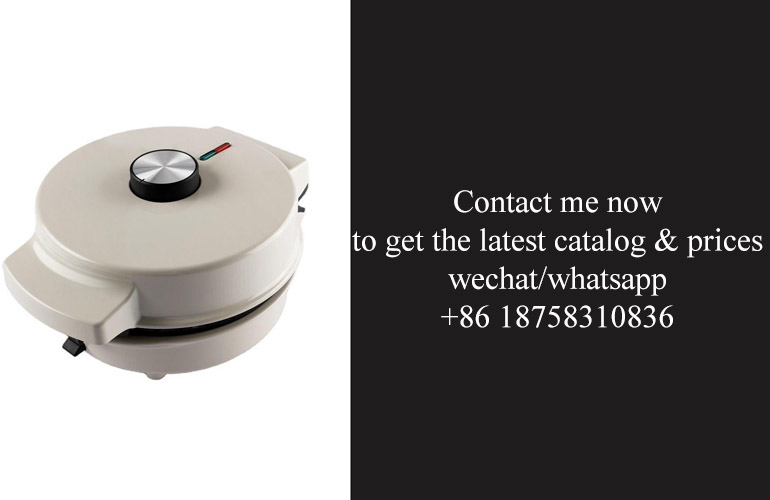
In the ever-evolving kitchen appliances sector, innovation is key to staying ahead. Brands are pushing the boundaries with groundbreaking product concepts that cater to the changing needs and preferences of consumers. Here’s a look at some innovative ideas reshaping the industry:
Smart Integration: The integration of smart technology into kitchen appliances has become a game-changer. Imagine a fridge that not only keeps your food fresh but also suggests recipes based on its contents, or an oven that can be controlled remotely via your smartphone. This level of connectivity not only enhances convenience but also optimizes energy use.
Energy Efficiency: With growing environmental concerns, energy-efficient appliances are gaining traction. Designers are focusing on creating products that consume less power without compromising on performance. Features like LED lighting, programmable settings, and eco-friendly materials are becoming standard in new models.
Multi-Functional Appliances: The kitchen is no longer just a place for cooking; it’s a hub for entertainment and socializing. Appliances that combine multiple functions are becoming increasingly popular. For instance, a countertop unit that can serve as a blender, food processor, and even a juicer is a compact solution for busy cooks.
Personalized Cooking Experience: Customization is a key trend in the kitchen appliances sector. Appliances that allow users to tailor their cooking experience, such as ovens with adjustable cooking modes or cooktops with variable heat zones, are becoming more common. This personalization extends to user interfaces as well, with touchscreens and voice-controlled systems becoming standard.
Health and Wellness-Oriented Products: As health consciousness grows, so does the demand for appliances that promote wellness. This includes everything from steam ovens that reduce the need for butter and oil in cooking to air fryers that offer a healthier alternative to deep-frying. Additionally, there’s a rise in kitchen appliances designed to help track and monitor dietary intake.
Sustainable and Eco-Friendly Design: Sustainability is a driving force in product development. Appliances made from recycled materials, or those that can be easily disassembled for recycling at the end of their life, are becoming more prevalent. The design philosophy also extends to packaging, with more brands opting for eco-friendly packaging solutions.
Adaptive Cooking Technology: Some appliances are now equipped with adaptive cooking technology that learns from user preferences and cooking habits. These systems can adjust cooking times and temperatures based on the user’s past interactions, ensuring that every meal is tailored to their preferences.
Interactive Cooking Assistants: The rise of interactive cooking assistants, such as smart cooktops that can guide users through recipes step by step, is transforming the cooking experience. These appliances can provide real-time feedback, suggest ingredient substitutions, and even offer tips for improving cooking techniques.
Safety Features: Safety is always a top priority, and new appliances are being designed with enhanced safety features. This includes features like child locks, automatic shut-off mechanisms, and sensors that detect overcooked or burnt food. These innovations not only protect users but also extend the lifespan of the appliances.
Customizable Aesthetics: Aesthetics are becoming as important as functionality. Consumers are looking for appliances that not only perform well but also complement their kitchen’s design. This has led to the development of appliances with customizable colors, finishes, and even modular designs that can be mixed and matched.
As the kitchen appliances sector continues to evolve, these innovative product concepts are setting the stage for a new era of cooking, where technology, sustainability, and personalization meet to create a more efficient, enjoyable, and health-conscious culinary experience.
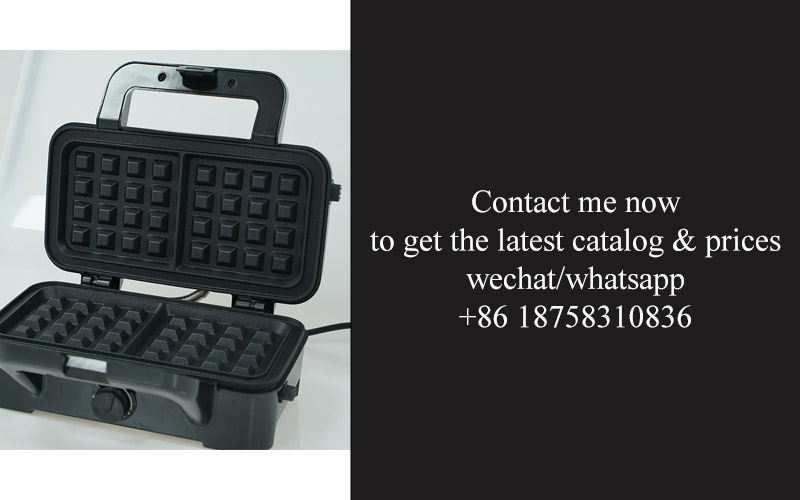
In the evolving landscape of kitchen appliances, local suppliers play a pivotal role in the import substitution program, a strategic move to bolster domestic industries and reduce reliance on foreign imports. Here’s how they are making a significant impact:
The shift towards domestic production has prompted local suppliers to adapt their offerings, focusing on quality and innovation to meet consumer demands. By leveraging local resources and labor, these suppliers are able to create appliances that resonate with regional preferences and needs.
Collaborations with designers and engineers have led to the emergence of unique product concepts tailored to the European and North American markets. Local suppliers are not just manufacturing traditional appliances but are introducing smart, energy-efficient, and sustainable solutions that cater to the modern consumer’s eco-consciousness.
The import substitution program has also encouraged local suppliers to invest in research and development, pushing the boundaries of what’s possible in kitchen appliances. This has resulted in a surge of products that not only match international standards but also offer localized features that enhance user experience.
Customization has become a key differentiator for local suppliers. By offering a range of options and allowing for personalization, these suppliers are able to cater to diverse tastes and preferences, from compact appliances for urban apartments to high-end units for luxury homes.
Quality control is paramount in the import substitution program, and local suppliers are stepping up their game to ensure that every product meets stringent quality standards. This focus on excellence has helped build trust with consumers, who now see domestic brands as reliable alternatives to imported ones.
Local suppliers are also taking advantage of the shorter supply chains to offer faster delivery times and reduced costs. This agility allows them to respond quickly to market changes and customer feedback, ensuring that products are always up-to-date with the latest trends.
Sustainability is at the forefront of the import substitution movement, and local suppliers are leading the charge in this area. By sourcing materials locally and manufacturing with eco-friendly practices, they are contributing to a greener future while also addressing the environmental concerns of consumers.
Government incentives and policies supporting the import substitution program have provided local suppliers with a competitive edge. These subsidies and tax breaks have helped them invest in new technologies and expand their production capabilities.
The rise of e-commerce has been a boon for local suppliers, allowing them to reach a wider audience without the constraints of physical stores. Online platforms have become a critical channel for marketing and selling appliances, giving local brands a global presence.
Local suppliers are also fostering a culture of innovation through mentorship programs and partnerships with educational institutions. By nurturing the next generation of engineers and designers, they are ensuring a steady stream of fresh ideas and talents.
As the import substitution program gains momentum, local suppliers are not just suppliers; they are becoming innovators, leaders, and custodians of the kitchen appliances sector. Their role in driving the program’s success is undeniable, and their impact is felt across the entire supply chain.
The integration of technology into kitchen appliances has opened up new avenues for local suppliers. Smart features and connectivity are becoming standard, and domestic suppliers are at the forefront of integrating the latest advancements, making their products more user-friendly and efficient.
Finally, the community aspect of local suppliers cannot be overstated. By supporting local businesses, consumers are investing in their own economies, creating jobs, and fostering a sense of pride in local craftsmanship. This collective effort is the backbone of the import substitution program’s success and a testament to the power of local suppliers in shaping the future of kitchen appliances.
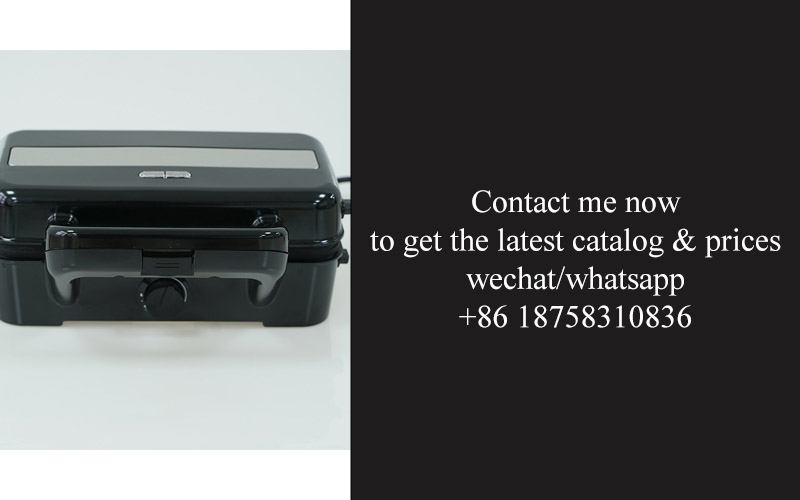
In the dynamic world of kitchen appliances, staying abreast of the latest trends is crucial for both manufacturers and consumers. Here’s a glimpse into the current trajectory and the data that shapes the industry:
Energy Efficiency is KeyConsumers and governments alike are increasingly focusing on energy efficiency. Smart appliances that consume less power and offer eco-friendly features are gaining traction. Data from market research firm Euromonitor International indicates a significant rise in sales of energy-saving models, with a 15% increase in the past two years.
Smart Technology IntegrationThe integration of smart technology is another major trend. Appliances that can connect to home automation systems and offer remote control through smartphones or smart speakers are becoming more popular. A report by Statista shows that smart kitchen appliance sales have seen a compound annual growth rate (CAGR) of 20% over the past five years.
Health and Wellness FeaturesAs health consciousness grows, kitchen appliances with features that promote wellness are on the rise. For instance, induction cooktops that reduce harmful emissions, air fryers that use less oil, and refrigerators with air purification systems are attracting a new wave of customers. Nielsen’s research highlights that over 50% of consumers are willing to pay a premium for appliances that contribute to health and wellness.
Customization and PersonalizationTailored solutions are becoming more common as consumers seek products that fit their specific needs. From variable speed blenders to multifunctional cookers that can handle a variety of tasks, the industry is responding with a wave of customizable appliances. According to a survey by the International Data Corporation (IDC), 40% of consumers prefer appliances that can be personalized to their preferences.
Sustainability and Eco-Friendly MaterialsThe sustainability movement has seeped into kitchen appliances as well. Manufacturers are using eco-friendly materials and focusing on the lifecycle of their products. A study by the Ellen MacArthur Foundation found that over 70% of consumers are willing to pay more for sustainable products. Recyclable appliances and those made from recycled materials are becoming more prevalent.
Urbanization and Compact LivingThe trend towards urbanization and smaller living spaces is influencing appliance design. Compact and space-saving appliances are becoming a necessity for urban dwellers. The KitchenAid Appliance Index shows a 30% increase in sales of compact appliances in urban areas over the past year.
Digitalization and Data AnalyticsThe digitalization of kitchen appliances is not just about connectivity; it’s also about data. Manufacturers are using data analytics to improve appliance performance and to offer personalized advice to users. A Gartner report notes that by 2025, 90% of new kitchen appliances will be IoT (Internet of Things) enabled, providing insights into usage patterns and maintenance schedules.
Safety and SecuritySafety has always been a concern, but with the rise of smart appliances, security is now a priority. From tamper-proof settings to child lock features, the industry is focusing on ensuring that appliances are not only safe to use but also secure against unauthorized access. A survey by the Consumer Technology Association found that 75% of consumers prioritize appliance safety features.
The rise of e-commerceThe pandemic accelerated the shift towards online shopping, and kitchen appliances are no exception. Data from the e-commerce giant Amazon shows a 35% increase in kitchen appliance sales during peak shopping periods, reflecting the growing trend of buying appliances online.
The role of social mediaSocial media has become a powerful tool for appliance manufacturers to showcase their products and influence consumer preferences. A study by Sprout Social reveals that over 80% of consumers research kitchen appliances online, with social media being a significant part of their decision-making process.
These trends, backed by solid data, are reshaping the kitchen appliances sector. As manufacturers continue to innovate, they must keep an eye on consumer behavior and market dynamics to stay competitive and meet the evolving demands of their customers.
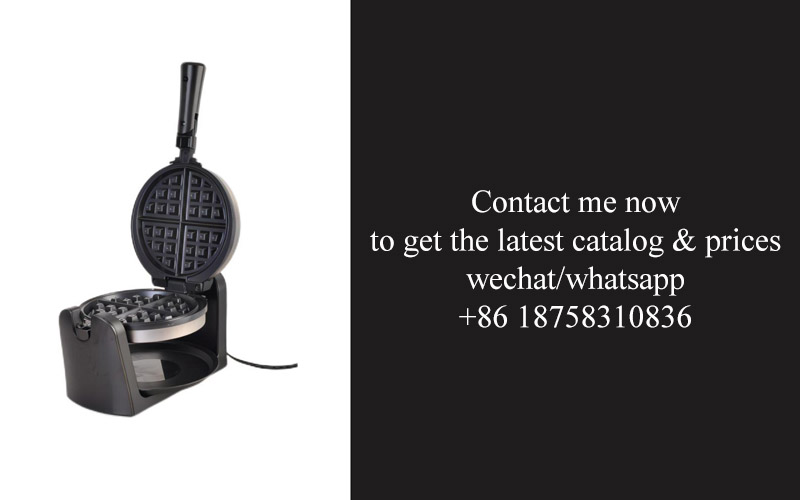
In the realm of import substitution, several case studies stand out as successful initiatives that have reshaped the kitchen appliances sector. From smart kitchen gadgets to energy-efficient appliances, these examples showcase how local suppliers have stepped up to meet market demands.
1. The Smart Oven RevolutionA local supplier in Germany, previously reliant on imports for its oven technology, took a bold step to develop its own line of smart ovens. By integrating IoT capabilities, the company’s ovens now offer remote monitoring, automatic temperature adjustments, and even recipe recommendations. This innovation not only met consumer expectations for convenience but also significantly reduced the need for imported products.
2. The Eco-Friendly BlenderIn the United States, a small startup focused on sustainability introduced an eco-friendly blender made entirely from recycled materials. This product not only addressed the environmental concerns of consumers but also provided a cost-effective alternative to imported blenders. The company’s commitment to sustainability and its ability to cater to eco-conscious buyers has made it a standout in the market.
3. The Compact Kitchen Appliances LineA mid-sized manufacturer in Italy faced stiff competition from global brands. To differentiate itself, it developed a line of compact kitchen appliances that were perfect for smaller homes or urban apartments. This niche approach allowed the company to carve out a loyal customer base and reduce its reliance on imports, as the demand for space-saving appliances was high within its target market.
4. The Smart Fridge with Local TouchA local supplier in the UK combined the latest smart fridge technology with a unique local twist. By offering customizable features that catered to local dietary preferences and cultural habits, the fridge became a hit. This not only decreased the need for imported fridges but also reinforced the brand’s identity as a supplier that truly understands and responds to local consumer needs.
5. The Solar-Powered Kitchen LineIn a bid to reduce energy consumption and carbon footprint, a supplier in Spain launched a range of solar-powered kitchen appliances. This initiative was not just a response to market demands but also a statement of environmental responsibility. The products, which included solar ovens and solar-powered toasters, were a hit among eco-conscious consumers, further reducing imports and fostering a sense of pride in the local brand.
6. The Smart Kitchen System IntegrationA technology company in France took import substitution to the next level by creating a comprehensive smart kitchen system. This system integrated various appliances, allowing for seamless control and optimization of kitchen operations. By providing a one-stop solution, the company was able to replace multiple imported devices with a single, locally produced system.
7. The Local Craftsmanship in Kitchen SinksA family-run business in the Netherlands focused on crafting high-quality kitchen sinks from local materials. By emphasizing the craftsmanship and uniqueness of their products, they were able to capture a market segment that valued traditional craftsmanship over mass-produced imports. This focus on local heritage and quality has led to a growing customer base and a reduced dependence on imported sinks.
8. The Smart Storage SolutionA supplier in Canada developed a line of smart storage solutions that combined convenience with efficiency. The products included modular storage units that could be customized to fit any kitchen layout and integrated with smart home systems. This innovative approach allowed the company to address a common consumer pain point and offer a locally produced alternative to imported storage solutions.
9. The Health-Conscious BlenderA local supplier in Australia introduced a blender that focused on health and wellness. With features like a built-in juicer and smoothie creator, the blender became a must-have for health enthusiasts. By tapping into a growing market for wellness products, the supplier was able to create a successful import substitution product that resonated with local consumers.
10. The Customizable Oven RangeA manufacturer in the United States recognized the importance of customization in the kitchen appliance market. They developed a range of ovens that allowed customers to choose from various sizes, styles, and functionalities. This flexibility allowed the company to cater to a wide range of consumer preferences and reduce the need for imported ovens.
These case studies highlight the diverse strategies that local suppliers have employed to succeed in the import substitution program. From innovation to market segmentation, each example demonstrates how a focus on local needs and quality can lead to a thriving market and reduced reliance on imported goods.

Navigating the competitive landscape, suppliers in the kitchen appliances sector face a myriad of challenges and opportunities. From evolving consumer demands to technological advancements, here’s a closer look at the intricate web of hurdles and possibilities:
In an era where sustainability is no longer a niche concern but a mainstream expectation, suppliers must adapt their offerings to align with eco-friendly practices. This shift demands not only the use of recyclable materials but also the development of energy-efficient appliances that minimize the carbon footprint.
The integration of smart technology has become a cornerstone in the kitchen appliances market. Suppliers must grapple with the challenge of integrating these technologies seamlessly into their products without compromising on functionality or affordability. The opportunity lies in becoming a leader in smart kitchen solutions, offering users enhanced convenience and control over their appliances.
Consumer preferences are rapidly evolving, with a growing trend towards healthier lifestyles. Suppliers that can cater to these demands by offering appliances that aid in meal preparation, food storage, and safety will find a niche market. This requires a focus on innovation in design and functionality, such as kitchen appliances that can monitor food spoilage or suggest healthier recipes.
Global supply chains have been disrupted by trade tensions and logistics challenges. Suppliers are under pressure to ensure a stable supply of components while managing costs. The opportunity here is to build stronger local supplier networks and invest in supply chain resilience. This could involve diversifying sourcing options and establishing strategic partnerships.
Regulatory compliance is a persistent challenge for suppliers, especially when it comes to safety standards and certifications. Staying ahead of these regulations and ensuring compliance can be costly but also presents an opportunity to differentiate products. Suppliers that can demonstrate their commitment to safety and quality can build trust with consumers and gain a competitive edge.
The rise of e-commerce has transformed the way consumers purchase kitchen appliances. Suppliers must navigate the complexities of online sales, from inventory management to customer service. The opportunity is to leverage digital marketing and e-commerce platforms to reach a broader audience and offer personalized shopping experiences.
Market saturation is a challenge that many suppliers face, particularly in mature markets. Differentiation through branding and marketing is crucial. Suppliers that can tell a compelling story about their brand and products, highlighting unique selling propositions, can stand out in a crowded marketplace.
As consumers become more health-conscious, there’s an opportunity for suppliers to focus on appliances that support wellness. This could include water filters that improve the quality of drinking water, air purifiers for kitchen ventilation, or appliances that can help track nutritional content.
The integration of artificial intelligence and machine learning into kitchen appliances is on the horizon. Suppliers that invest in research and development to incorporate these technologies will be well-positioned to offer cutting-edge products. However, this also requires a workforce skilled in AI and machine learning, which can be a significant investment.
The challenge of product obsolescence is ever-present. Suppliers must stay abreast of technological advancements and consumer trends to ensure that their products remain relevant. This can be achieved through continuous innovation and a willingness to invest in product lifecycle management.
Lastly, the opportunity to expand into emerging markets is substantial. As these markets grow, there’s a demand for affordable yet high-quality kitchen appliances. Suppliers that can adapt their products to meet the specific needs and budgets of these markets stand to gain significant market share.
In conclusion, while the kitchen appliances sector presents a host of challenges, it also offers abundant opportunities for suppliers willing to embrace change, innovate, and adapt to the evolving landscape. Success lies in balancing these challenges with strategic planning and a forward-thinking approach.

In a rapidly evolving market, suppliers must adapt their strategies to capitalize on emerging trends. Here’s a look at some effective strategies:
Embrace Smart Technology IntegrationSuppliers are increasingly integrating smart technology into their kitchen appliances. From connected ovens that can be controlled via smartphones to refrigerators that track nutrition and inventory, this tech-driven approach offers both convenience and data insights for consumers. Suppliers that invest in R&D to create innovative smart appliances are likely to gain a competitive edge.
Focus on Energy EfficiencyWith growing environmental concerns, energy-efficient appliances are becoming a priority for consumers. Suppliers can leverage this trend by developing products that meet or exceed energy-saving standards. By emphasizing the long-term cost savings and environmental benefits, suppliers can attract environmentally conscious customers.
Personalization and CustomizationCustomization is no longer just a luxury; it’s a necessity. Suppliers can explore opportunities to offer personalized solutions, whether it’s through customizable colors, finishes, or even tailored features. This approach allows customers to feel a stronger connection to their appliances and can drive higher satisfaction and loyalty.
Sustainability and Eco-Friendly PracticesConsumers are more aware of the environmental impact of their purchases. Suppliers who prioritize sustainability in their production processes and materials used can appeal to this growing segment. This could involve sourcing materials from sustainable sources, using recycled components, or developing biodegradable packaging.
Collaboration with Professional Chefs and InfluencersCollaborating with professional chefs and influencers can enhance a supplier’s credibility and appeal. These partnerships can lead to co-branded products, recipe development, and educational content that highlight the quality and versatility of the appliances. Chefs’ endorsements can significantly influence consumer buying decisions.
Enhance Online Presence and E-CommerceAs online shopping continues to grow, suppliers must ensure they have a strong online presence. This includes optimizing websites for mobile devices, offering detailed product information, and providing seamless online shopping experiences. Suppliers can also leverage social media and influencer marketing to reach a wider audience.
Leverage Data AnalyticsData analytics can provide valuable insights into consumer preferences, market trends, and purchasing behavior. By analyzing this data, suppliers can tailor their product offerings and marketing strategies to better meet customer needs. This can lead to more targeted marketing campaigns and improved customer satisfaction.
Invest in Training and DevelopmentTo stay competitive, suppliers need a skilled workforce. Investing in employee training and development ensures that staff are up-to-date with the latest industry knowledge and technology. This can lead to better customer service, more innovative product design, and improved operational efficiency.
Diversify Product LinesDiversifying product lines allows suppliers to cater to a wider range of customer segments. This could involve expanding into related categories, such as outdoor kitchen appliances or wellness-focused kitchen gadgets. By diversifying, suppliers can reduce their reliance on a single product and mitigate risks associated with market fluctuations.
Focus on Customer ExperienceUltimately, the customer experience is key. Suppliers should prioritize customer satisfaction by ensuring that their products are of high quality, easy to use, and come with excellent after-sales service. This includes providing clear warranty information, easy-to-access customer support, and prompt resolution of any issues that arise.
By adopting these strategies, suppliers can position themselves to capitalize on market trends and build a strong, sustainable business in the kitchen appliances sector.
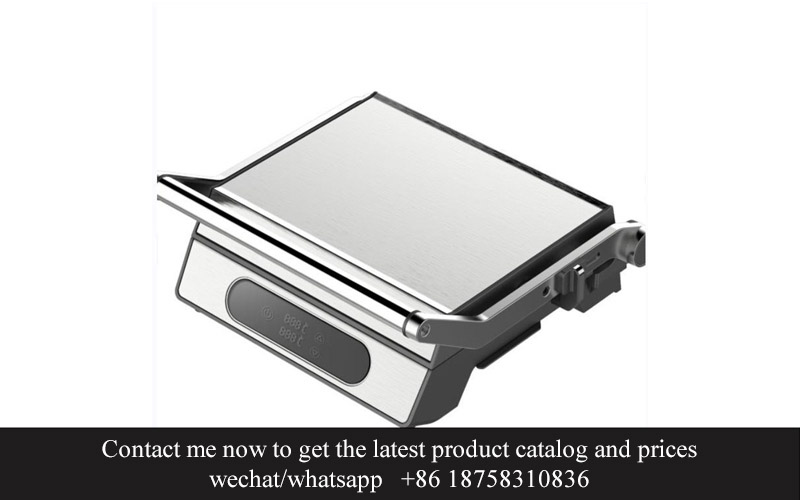
The kitchen appliances sector is undergoing a transformative shift, with a growing emphasis on import substitution. As the landscape evolves, it’s crucial for suppliers to adapt and leverage market trends to stay competitive. Here are some strategies that can help suppliers navigate the changing tide:
Innovative Design IntegrationSuppliers need to focus on integrating cutting-edge design elements into their products. This could mean incorporating smart technology, sleek aesthetics, or eco-friendly materials. By offering products that not only perform well but also look modern and sustainable, suppliers can attract consumers who are increasingly looking for both functionality and style.
Collaborative Development with Local ManufacturersCollaboration with local manufacturers can be a game-changer. By working closely with these partners, suppliers can ensure that their products are tailored to the local market’s needs and preferences. This can lead to quicker turnaround times, lower costs, and a better understanding of regional demand patterns.
Market Research and Consumer InsightsA deep dive into market research and consumer insights is essential. Suppliers should gather data on emerging consumer trends, such as the rising popularity of smart appliances or the demand for energy-efficient models. This information can guide product development and help suppliers anticipate future market needs.
Sustainable and Eco-Friendly PracticesWith the growing emphasis on sustainability, suppliers must consider eco-friendly practices in their supply chain and product design. This could involve sourcing materials from sustainable sources, reducing packaging waste, or developing appliances that are energy-efficient and have a longer lifespan.
Digital Transformation and E-CommerceThe digital transformation is a must for suppliers looking to capitalize on market trends. Establishing a strong online presence and embracing e-commerce platforms can expand a supplier’s reach. Offering seamless online shopping experiences, detailed product information, and efficient delivery options can enhance customer satisfaction and loyalty.
Customization and PersonalizationTailoring products to meet individual customer preferences is becoming more important. Suppliers can offer customization options that allow consumers to choose features, colors, or even size to suit their specific needs. This personal touch can set a supplier’s brand apart in a crowded market.
Investment in Research and DevelopmentContinuous investment in research and development is key to staying ahead of the curve. Suppliers should allocate resources to innovation, exploring new technologies and materials that can offer competitive advantages. This not only ensures that products are up-to-date but also positions the supplier as an industry leader.
Partnerships with RetailersBuilding strong partnerships with retailers is vital. By working closely with retail chains, suppliers can gain valuable insights into consumer buying behavior and market trends. This collaboration can also lead to joint marketing initiatives and exclusive product offerings that can boost sales.
Education and Training ProgramsOffering education and training programs for both staff and consumers can enhance the value proposition. Suppliers can provide training on the use and maintenance of their products, which can improve customer satisfaction and reduce the number of returns or service calls.
Adaptability and FlexibilityThe ability to adapt and be flexible is crucial. Market trends can shift rapidly, and suppliers must be prepared to pivot their strategies accordingly. This could mean adjusting production lines, modifying product specifications, or even changing distribution channels to meet new market demands.
In conclusion, the future of kitchen appliances in the import substitution era hinges on suppliers’ ability to adapt to changing consumer preferences, technological advancements, and market dynamics. By focusing on innovation, sustainability, digital transformation, and strategic partnerships, suppliers can position themselves to thrive in this evolving landscape.